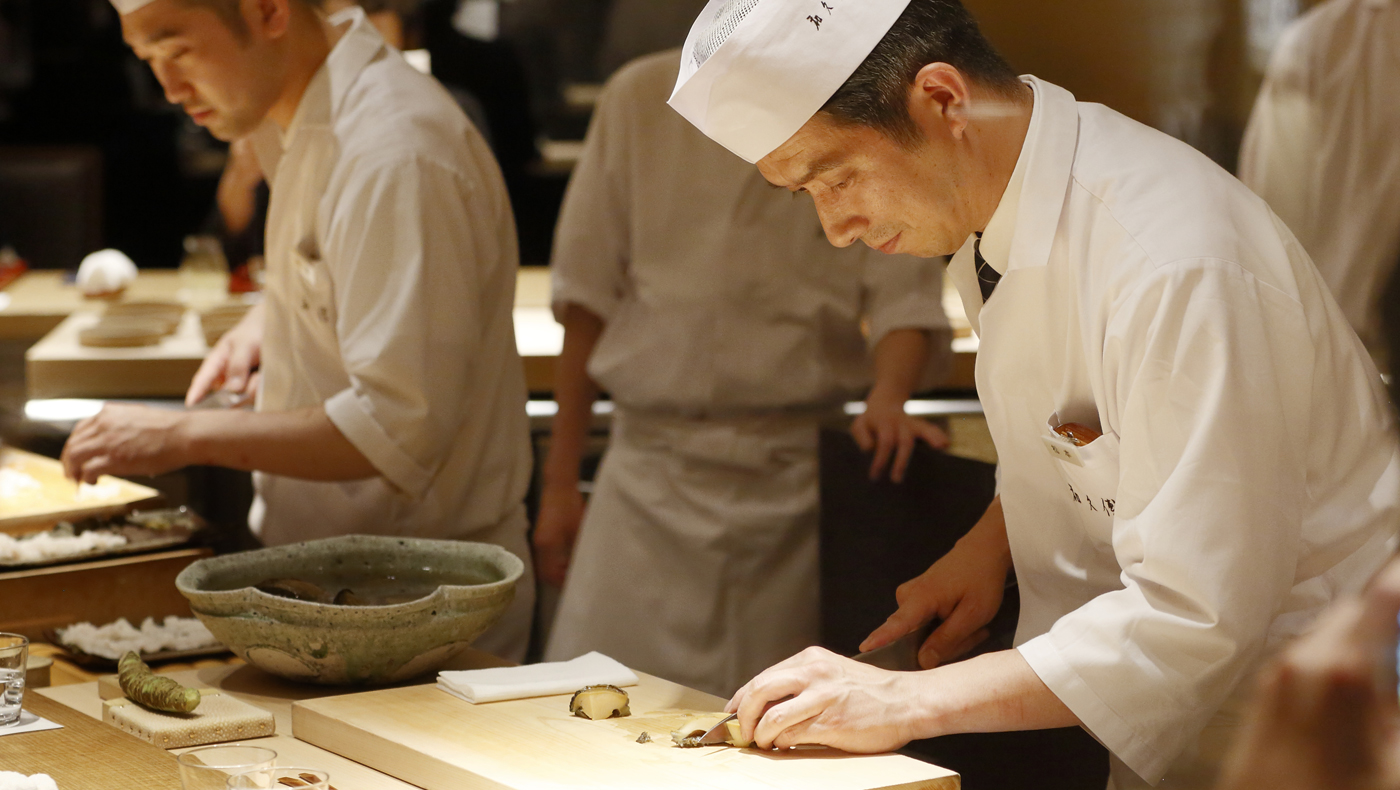
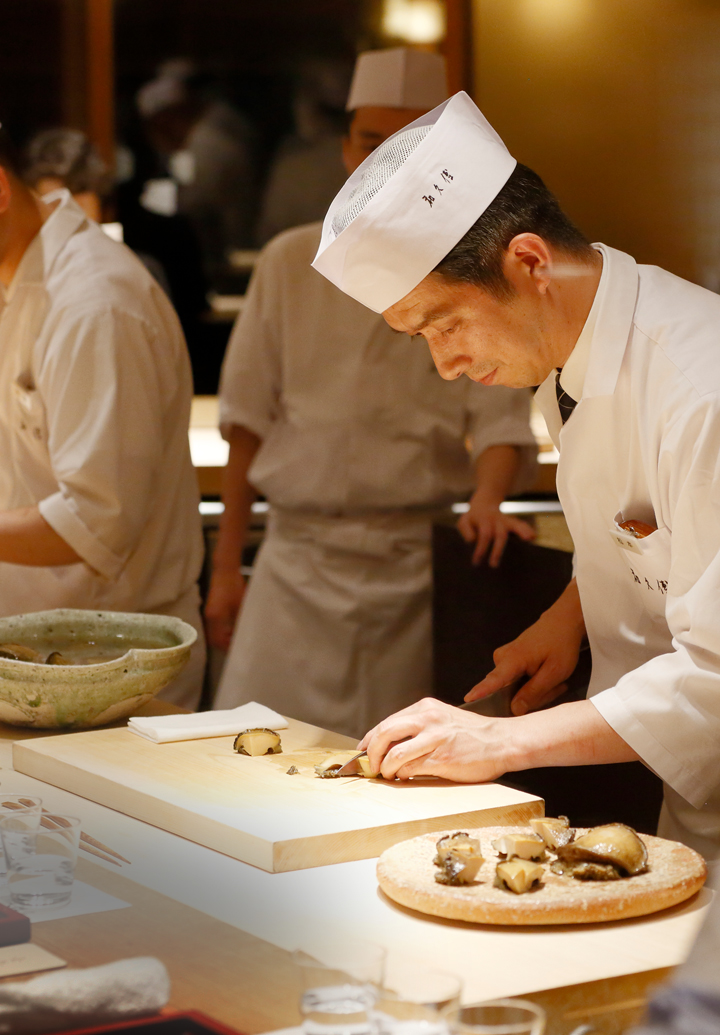
Muromachi Wakuden
Cooking On-Site: Dashi
2019.07.11
It’s that time of year when the mountains turn deep shades of green.
In Kyoto, on a day with no rainy season in sight, we held a cooking event centered on dashi, or soup stock.
For the dashi, an indispensable ingredient in Japanese cuisine, the first thing the cooks paid attention to was water. They compared three different local waters.
For the dashi, an indispensable ingredient in Japanese cuisine, the first thing the cooks paid attention to was water. They compared three different local waters.
One water was from Fushimi to the south of Kyoto, a place famous for its sake (and therefore for its water). Another water came from the Somei well of Nashinoki Shrine, located to the east of Kyoto’s imperial palace grounds—one of the city’s three famed water spots. The third water came from up north at Shinjuan, a hermitage of Daitokuji temple which is associated with the well-known Zen priest Ikkyu Sojun. You would be surprised to learn that each one actually tastes completely different. Hard water and soft water draw out different things, so in Kyoto you can really feel history in the food culture and lifestyle.
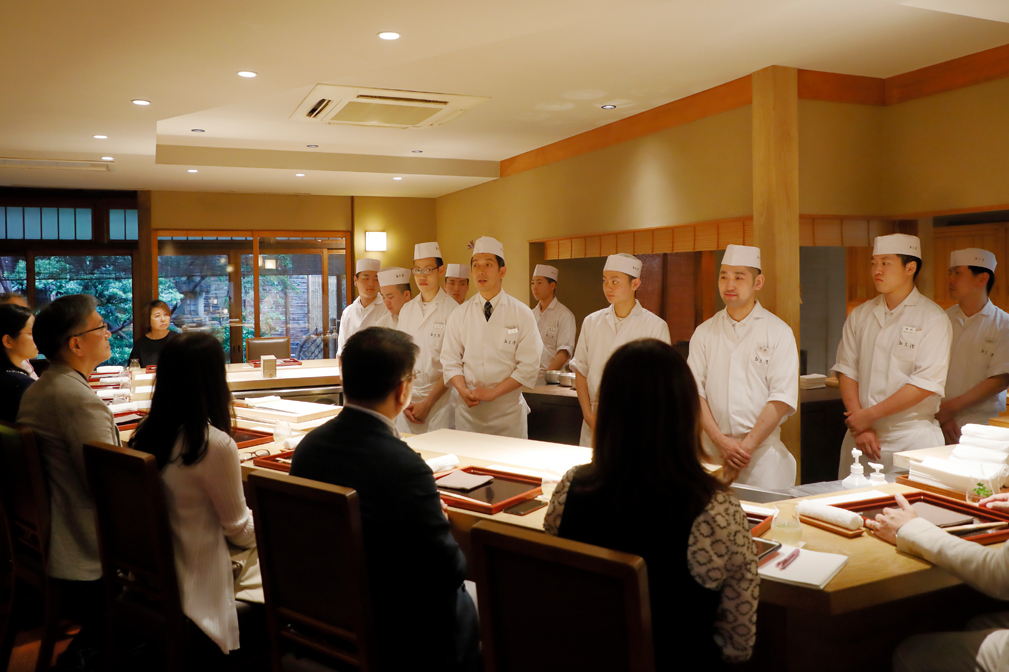
The origin of dashi dates back to the Jomon period, when people began to cook food. Ever since the Muromachi period (14th c.), cargo ships have transported kelp from the far northern islands all the way to the capital, where it played an important role in the development of shōjin ryōri.
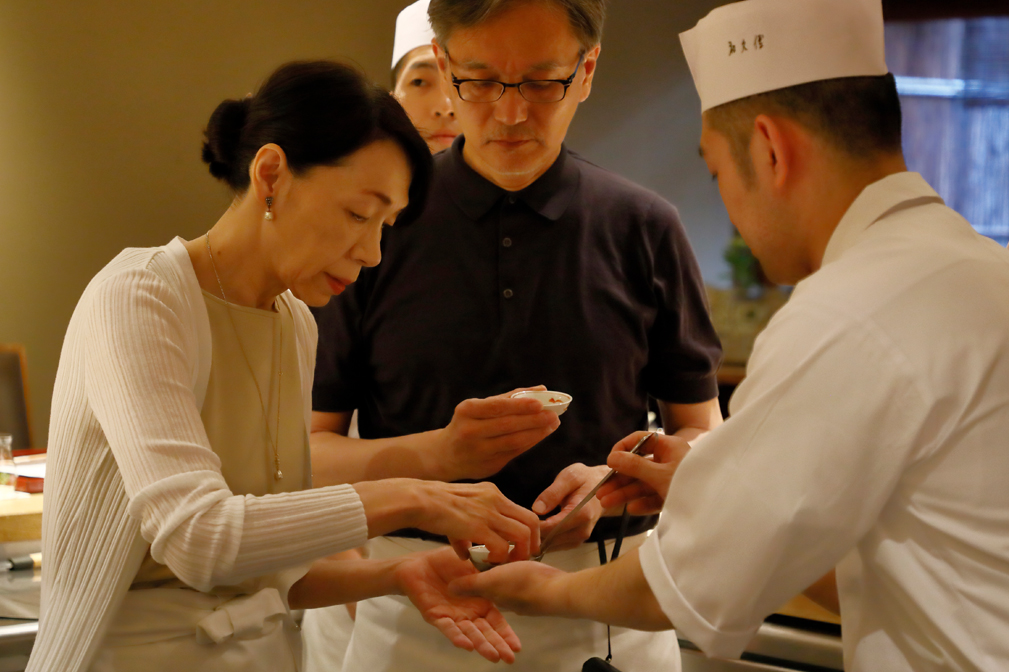
After listening to the story of kelp, the chefs sliced up three types of dried bonito they had prepared and everyone tasted the freshly cut shavings. The sweet aroma of bonito enveloped the room. As they set about preparing the soup, they talked about the differences between kelp and bonito in terms of the environment they are produced in and their respective manufacturing processes. With sharpened senses, the group tasted the three dashi made from the three different waters, letting the flavors of each different soup spread through their mouths.
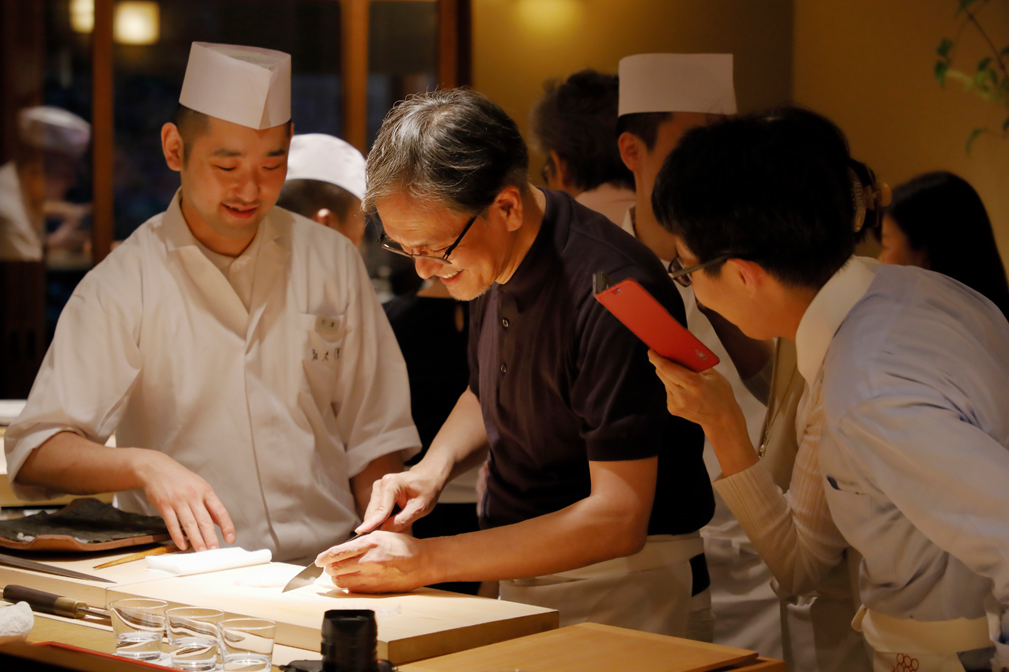
After seeing how the chefs cut fish, guests were welcome to try their hand with the knife.
We work with different types of fish for our cooking events depending on the season: in summer it is conger eel (hamo) and in the winter it is horse-head fish (amadai).
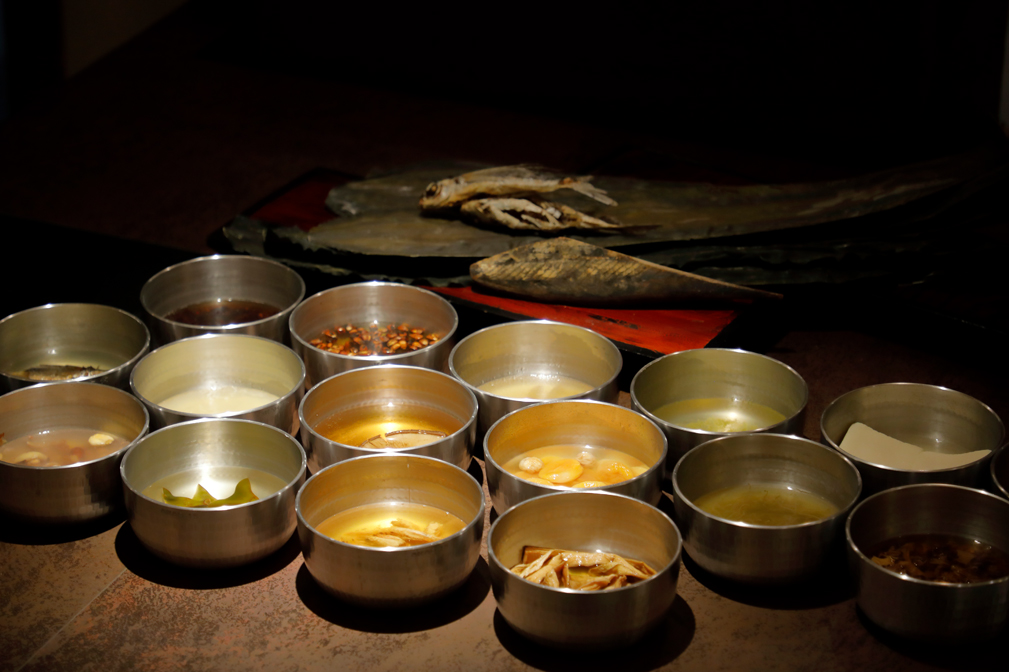
Dashi is not limited to kelp and bonito alone. The chefs prepared a number of other soup stocks flavored by the aging and fermentation of various ingredients.
When the meal ended, head chef Matsumoto made a statement. “Today,” he said, “we first studied kelp and bonito all together, then prepared a menu using dashi made from ingredients other than bonito.”
He explained that he wanted to wow them all by having them taste the delicate kelp and bonito broth at the beginning of the event, and then for the cooks to enjoy creating dishes that took dashi as their very starting point.
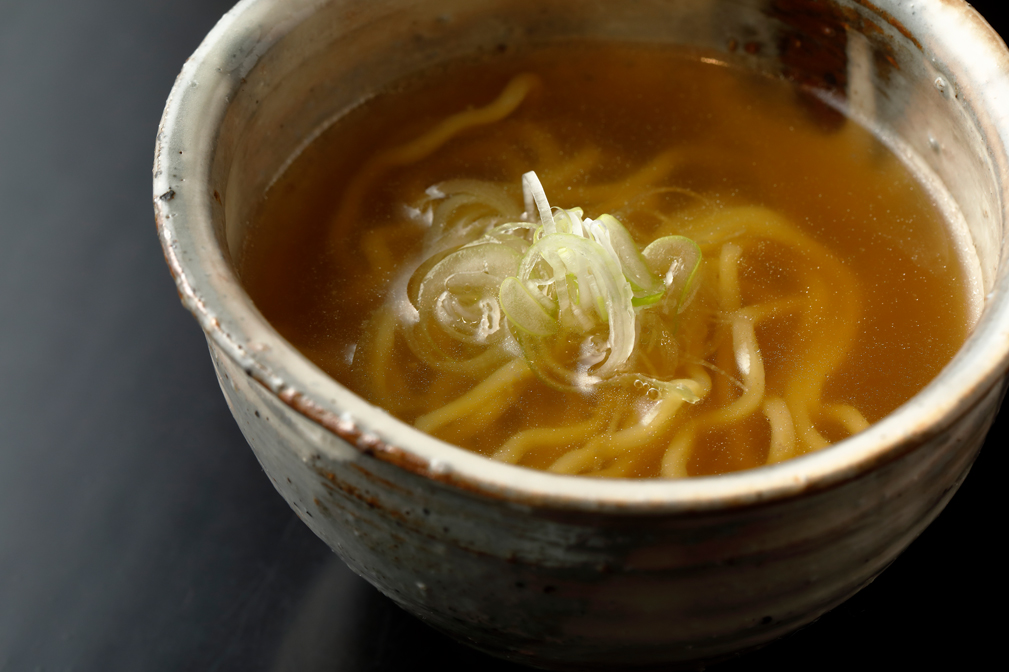
The last dish of the meal was ramen.
Capping the feast was a soup of chicken-bone dashi, agodashi (made from dried flying fish), and grilled shrimp all carefully simmered with mixed vegetables.
